Content is from Kirkbride et al. 2006Kirkbride et al. 2006:
Kirkbride JH, Jr, Gunn CR, and Dallwitz MJ. 2006. Family guide for fruits and seeds, vers. 1.0. Accessed September 2020-January 2022. URL: https://nt.ars-grin.gov/seedsfruits/keys/frsdfam/index.cfm ., without modification.
Updates are forthcoming.
Fruits: Pistil(s) 1; 1-pistillate. Fruit anthocarpanthocarp:
simple or compound and including some tissue of non-ovarian origin (accessory tissue)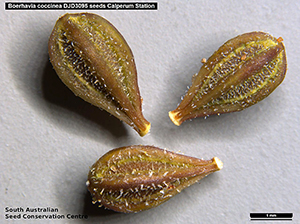 (Spjut did not score this family); simple; within accessory organ(s); within calyxcalyx:
(Spjut did not score this family); simple; within accessory organ(s); within calyxcalyx:
the outer whorl of the perianth; all the sepals of a flower (5 winglike calices); accrescentaccrescent:
(5 winglike calices); accrescentaccrescent:
growing continuously
; not sulcatesulcate:
surface relief—having one or more elongate, relatively narrow and shallow depressions or grooves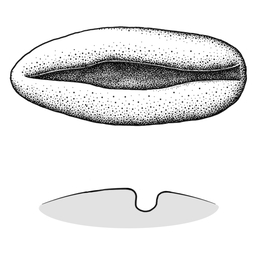 ; apexapex:
; apexapex:
the point farthest from the point of attachment, or the "tip" of an organ not beaked; indehiscentindehiscent:
not beaked; indehiscentindehiscent:
not opening on its own, as in a fruit
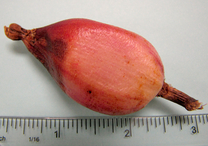 . Epicarpepicarp:
. Epicarpepicarp:
outer layer of fruit wall or pericarp, if divided into layers; note here used synonymously with exocarp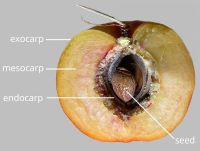 durable; without armature; without apicalapical:
durable; without armature; without apicalapical:
at or pertaining to the end of the seed or fruit distal from its point of attachment (i.e., base)
respiratory hole. Endocarpendocarp:
the inner layer of the pericarp, if divided into layers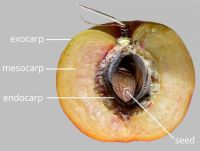 present; not separating from exocarpexocarp:
present; not separating from exocarpexocarp:
outer layer of fruit wall or pericarp, if divided into layers; note here used synonymously with epicarp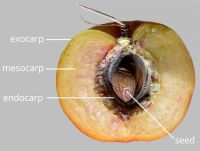 ; thin; not splitting into 1-seeded pyrenes; without operculumoperculum:
; thin; not splitting into 1-seeded pyrenes; without operculumoperculum:
a dehiscent cap (or lid) of a seed or fruit that opens during germination or dehiscence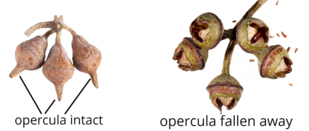 .
.
Seeds: Testatesta:
seed coat
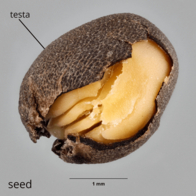 present; without glands; without wings; without collar; without operculumoperculum:
present; without glands; without wings; without collar; without operculumoperculum:
a dehiscent cap (or lid) of a seed or fruit that opens during germination or dehiscence ; colored; monochrome; not becoming mucilaginousmucilaginous:
; colored; monochrome; not becoming mucilaginousmucilaginous:
resembling mucilage; moist and sticky
when wetted. Embryo well developed.
No seed and little fruit data. Spjut did not score this family. (BARC) has fruit sample of Asteropeia multiflora, but has no literature in folder. Cronquist & Mabberley have in Theaceae.
Literature specific to this family: Grandidier, A. 1889. Hist. phys. Madagascar, plates 129, 130. Published by the author, Paris.
General references: Cronquist, A. 1981. An integrated system of classification of flowering plants, 1,262 p. Columbia University Press, New York, Gunn, C.R., J.H. Wiersema, C.A. Ritchie, & J.H. Kirkbride, Jr. 1992 & amendments. Families and genera of Spermatophytes recognized by the Agricultural Research Service. Techn. Bull. U.S.D.A. 1796:1–500, and Mabberley, D.J. 1987. The plant-book, 706 p. Cambridge University Press, Cambridge.